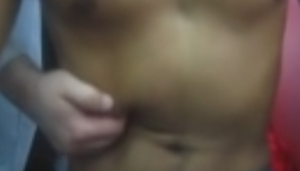The gallbladder is a pouch-like organ that’s shaped like a pear and its function is to store bile – a liquid product of the liver that’s essential for the digestion of fatty foods. In the event that either the duct or tube that moves bile to the gallbladder from the liver or the one that transports bile to the digestive tract from the gallbladder encounter blockage from gallstones or sludge, the result is gallbladder pain. Gallbladder pain can also result if either of these ducts are inflamed or infected.
Causes of gallbladder pain
Gallbladder pain is usually caused by either cholecystitis or gallstones. In most cases, cholecystitis, which is defined as a condition of the gallbladder suffering inflammation, is almost always the cause though gallbladder pain also has other causes that are less common.
Gallstones, being stones that have formed in the gallbladder, come in various sizes ranging between one or two millimeters to a couple of centimeters. Gallstones are made of pigments or cholesterol.
Characteristics of gallbladder pain
Gallstones lodging themselves in the bile ducts heading to the intestines from the liver or gallbladder is a common occurrence. When this happens the gallbladder pain that results is known as biliary colic. While a colicky kind of pain is one that is on and off, biliary colic does not exhibit that quality; the intensity may fluctuate but it won’t go away.
On the contrary it is persistent. It initially starts off abruptly and may either begin intensely or raise the intensity fast before hitting a peak. The pain will be persistent but the intensity may fluctuate before finally going away but at a gradual rate. The pain can last anywhere between fifteen minutes to a couple of hours. In instances where the pain has lasted longer than a couple of hours the diagnosis is that the gallstone at fault for leading to the biliary colic has induced a complication such as cholecystitis.
How and where the gallbladder pain is felt – location
- When someone has biliary colic there’s a tendency for them to move about looking for a position where they will be comfortable albeit unsuccessfully.
- Moving does not aggravate the pain since moving does not affect the gallbladder or the distended ducts.
- The pain is usually felt the most in the epigastrium or the mid-upper part of the abdomen. The other place where the pain is likely to be felt almost as much is the right upper part of the abdomen.
- There are also other places gallbladder pain is likely to be felt though uncommonly. This includes the left upper part of the abdomen as well as the lower part of the abdomen.
- In some instances pain may spread to unrelated areas such as the tip of the right shoulder blade or generally the right shoulder.
- Biliary colic is a problem that keeps recurring and sometimes at infrequent intervals.
One of the misconceptions about biliary colic is that it usually strikes after eating. The truth is that the most likely time for biliary colic to occur is during the evening, sometimes causing the victim to awaken from their sleep.
Symptoms of Gall Bladder Pain
One of the commonest symptoms that comes with biliary colic is a nauseous feeling that may or may not induce vomiting. And when the patient does vomit there’s no relief because the vomiting doesn’t have any effect on the gallbladder or the distended ducts.
Acute pancreatitis is also another symptom. This occurs when there’s intense pain in the abdomen slightly below the ribs. This sort of pain increases with time and usually appears right after meals. It may be accompanied by nausea followed by vomiting.
Cholangitis is yet another symptom. Cholangitis usually begins as a discomfort in the abdomen before graduating into pain. Chills, high fever, jaundice and itching may accompany Cholangitis.
A victim of gallbladder pain is also likely to experience other symptoms that are brought about by the pain. These include:
- General body weakness.
- Feeling light-headed.
- A feeling of being short of breath.
- Diaphoresis or sweating.
- Abdominal belching or bloating.
- Unusual bowel habits.
Diagnosis
One of the tests that can be carried out is an ultrasound scan of the abdomen. It has a high success rate when it comes to checking of the gallbladder wall as well as testing for gallstones.
Another test is the endoscopic ultrasound which is used for the detection of pancreatitis and choledocholithiasis. X-rays on the abdomen can also be done but not to check for gallbladder disease but for the detection of gallstones.
Treatment of gallbladder pain
In case the gallbladder pain is being caused by an infection antibiotics may be prescribed. This is especially so in the case of cholecystitis. Cholecystitis won’t be cured though but it will be stopped from spreading.
If the gallbladder pain is as a result of gallstones, ursodeoxycholic acid may be used to assist in the dissolution of the gallstones. This acid taken orally is especially suited for those who can’t have surgery. One of the treatment options for gallbladder pain is surgery, particularly cholecystectomy which is the removal of the gallbladder.


Накрутка Twitch Зрителей
Где Вы ищите свежие новости?
Лично я читаю и доверяю газете https://www.ukr.net/.
Это единственный источник свежих и независимых новостей.
Рекомендую и Вам